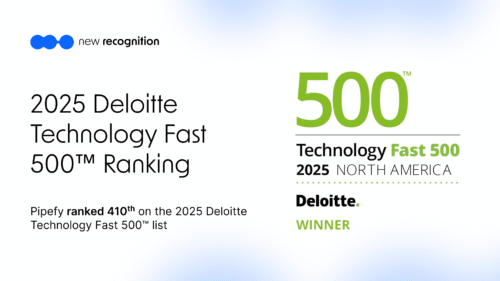
Intelligent automation (IA) refers to the combination of various technologies to automate repetitive tasks, generally for the purpose of reducing human effort and minimizing manual errors.
Such a system learns from accumulated data, thus increasing its efficiency over time. IA applications include pattern analysis, data assembly, and classification, which have use cases in a variety of industries.
This guide distinguishes IA from related technologies, discusses its benefits, and summarizes the steps for implementing IA.
What is intelligent automation (IA)?
IA, also known as intelligent process automation (IPA), combines technologies like artificial intelligence (AI) and robotic process automation (RPA). A clear knowledge of IA requires you to understand the key differences between IA and its components, which are closely related concepts.
Automate and connect every type of workflow
Differences between IA and RPA
RPA is a traditional technology in which users create a recording of a task which they convert to instructions for software. For example, they might open a folder, then a file, copy data into the file, and close the file. RPA software could then repeat the same process at scale.
IA is an advancement of RPA whose technology automates more complex tasks with minimal human intervention.
Unlike pure RPA, IA can also learn how to improve its performance over time. For example, IA can extract data from scanned invoices and gradually learn which invoices an organization uses most often, allowing IA to get faster at extracting the required data.
Differences between IA and AI
The main differences between AI and IA lie with their focuses and capabilities. AI systems attempt to mimic human intelligence to perform tasks autonomously. On the other hand, IA systems combine AI and other automation technologies to enhance human performance by improving efficiency and facilitating decision-making.
To illustrate this difference, an AI tool like ChatGPT can analyze a retailer’s datasets to predict customers’ buying behaviors, while IA could automate its lead qualification processes to let the sales team prioritize their efforts more effectively.
AI replicates human intelligence, while IA augments human capabilities. AI performs autonomous tasks without human intervention, while IA automates routine tasks and assists humans in making decisions.
The objective of AI is to mimic human cognition and decision-making, while IA streamlines processes and enhances their efficiency. Examples of AI include natural language processing (NLP) and predictive analytics, while examples of IA include RPA and ead-generation chatbots.
How does intelligent automation work?
IA uses a variety of software that collaborates and synchronizes to optimize workflows. These components include:
- AI
- RPA
- Machine learning (ML)
- NLP
- Computer vision
AI
AI is a field of computer science that focuses on solving problems that have traditionally required human cognition. It’s a broad field, so it encompasses other technologies like deep learning and ML.
Traditional automation tools can perform predefined tasks, but AI allows automated systems to learn from sources like historical data and user interactions. AI uses existing data to perform tasks more effectively over time.
In particular, it can recognize patterns and use that analysis to solve new problems, which is especially useful in dynamic environments that change over time.
RPA
RPA is the use of software robots, commonly known as “bots,” to complete repetitive tasks based on a set of rules. They employ existing user interfaces (UIs), eliminating the need for new software integrations.
Users can also train bots to operate software by generating the same results through the same UIs, although not necessarily using the same keystrokes. Some processes require multiple bots to complete, but they can scale to meet changes in demand once they’re trained to perform a task.
ML
ML is the process of using statistical algorithms and models to perform tasks without explicit instructions. These algorithms rely on large volumes of historical data to train an ML system on the required inputs and outputs by using patterns, historical data and inferences.
This capability allows the system to predict outcomes and act on them. IA can thus use ML to develop more precise and efficient workflows without human intervention.
NLP
NLP is a technology that computers use to interpret and understand human language. Users can train these systems by inputting data like emails, social media posts and texts into NLP software.
The software will then process this data, analyze it for trends and respond to human communication in real time. NLP thus improves the automated analysis of large text-based documents, resulting in greater comprehension and customer engagement.
Computer vision
Computer vision is a type of software designed to achieve human levels of accuracy when identifying people, places, and things in images. It helps automate processes like image extraction, identification, and classification.
Computer vision users can rapidly upload an image library during these processes, providing a continual stream of new images and objects for an automated system. Computer vision is often part of IA systems in fields like autonomous driving, manufacturing, medical imaging, and process control.
Benefits of intelligent automation
IA platforms provide many benefits across industries due to their ability to use large data volumes and perform precise calculations, typically when conducting analyses and implementing business processes. These benefits include the following:
- Reduced costs
- Improved accuracy
- Increased scalability
- Faster decision-making
- Better customer experiences
IA supplements the workforce by analyzing data, improving productivity, and reducing costs. It also allows companies to quickly scale their operations without increasing risk, compromising quality, or increasing the load on existing workforces. Business leaders also benefit by increasing yields and improving the return on investment (ROI) of software.

Improved accuracy
IA improves accuracy by increasing the consistency and quality of processes. The use of AI to drive decision-making and automate repetitive tasks also increases accuracy.
Better customer experiences
IA improves customer experience by multiple means, including higher quality, faster times to market, and providing faster answers to questions. These advantages all contribute to better customer experiences, which is increasingly important for remaining competitive in a modern business environment.
Faster decision-making
IA uses ML algorithms that perform advanced analytics on large datasets to generate actionable insights. These results provide valuable information for making better decisions for strategic planning and identifying areas for improvement.
Increased scalability
IA solutions increase an organization’s ability to meet increases in business needs. This scalability ensures that companies can efficiently handle larger workloads without significantly increasing manual intervention or resource allocation.
Intelligent automation use cases
IA streamlines processes in many industries that are based on legacy systems requiring manual tasks. These processes can be prone to human error, costly, and resource-intensive. Industries that derive great benefits from IA include the following:
- IT
- HR
- Procurement
IT
IA solutions in IT can reduce the workload of service desk agents by automating many processes. This use case allows agents to focus on more complex cases requiring human creativity to solve.
User management is a common example of this IA, as it requires users to create accounts with appropriate permissions when onboarding new employees. They must also add and update user access details in various applications like Microsoft and Oracle products. This process is time-consuming when agents perform them manually, as they often involve entering the same data multiple times.
IA streamlines the account creation process by automatically retrieving account creation requests, creating the account, generating usernames, and passwords, and then notifying users that their account is ready for use. Automating this process reduces the time needed to create the account.
Procurement
An IA platform can streamline procurement processes by automating tasks such as searching for suppliers and vendors, onboarding them, and creating supplier scorecards, among many others.
Its AI capability also allows such platforms to automate tasks like contract management, procure-to-pay, supplier relationship management, supply chain management, risk evaluation, and risk hedging. Businesses with IA can also automate inventory management for both raw materials and finished products, including tracking and auditing.
For example, IA can automate contract management by classifying contract formats and extracting fields from them via intelligent document processing. It can also track contract usage over time, allowing an enterprise to collect discounts from mechanisms like rebates, tiered pricing, and remuneration penalties specified in service level agreements (SLAs). In addition, IA solutions can proactively adjust invoice payments to account for reduced payments.
HR
HR management often involves many manual, repetitive processes. IA can provide significant benefits in terms of revenue increases and cost reductions. According to research by Workday and Personio, 93% of HR managers report using AI tools to reduce costs.
Companies can achieve many of these gains in recruitment by using IA to screen resumes, then create a short list of qualified candidates. This process is typically time-consuming but NLP bots can gather resumes, review them, and compare applicant data against relevant job requirements.
This process reduces the time needed to eliminate unqualified applicants and notify all candidates of their results. AI also minimizes the frequency of false negatives and positives, since it doesn’t rely on predefined keywords and other rules.
How to get started with IA in your business
IA can be a key differentiator, providing organizations with competitive advantages, but it first requires them to identify business areas in which machines can outperform humans. Companies must adopt a robust strategy for IA that uses multiple technologies working together.
The following is a set of basic steps for successfully implementing IA.
1. Set a goal
Get a clear understanding of the IA solutions overall strategy, including its objectives. This step typically focuses on identifying the functions and tasks requiring automation. In addition, it should determine the expected outcomes and benefits for the business.
2. Conduct process discovery
Process discovery identifies the areas with the greatest opportunities for improvement through automation. This analysis also includes an evaluation of the organization’s current technological infrastructure for the purposes of anticipating potential challenges to implementing IA.
3. Develop an implementation plan
Small businesses often implement their entire IA plan at once, but enterprises may prefer a test-and-learn approach. This plan should include milestones, targets, and timelines.
The implementation plan should also emphasize the training employees and the resources they’ll require to ensure successful implementation and maintenance.
4. Build a minimum viable product (MVP)
A successful IA implementation may require significant effort and resources. Most organizations should therefore develop an MVP to ensure that the IA will provide the expected results before rolling out a complete implementation.
5. Test and validate the solution
Companies should test all data inputs and outputs before deploying an IA solution to a live environment to avoid disruptions to business. In addition, they should ensure their solution can handle the expected transaction volume.
6. Deploy the solution and measure its performance
Deploying an IA solution typically includes employee training and continual monitoring of its performance. The organization can then address any problems that prevent the solution from delivering its expected outcome.
7. Measure the results and optimize the solution
Measuring the results of an IA solution allows the company to optimize it. This process should include regular reviews and evaluations to determine if initial goals were achieved, with a focus on identifying areas of improvement an
The organization should continually refine its IA solution to ensure it remains aligned with its overall business strategy.
Automate your business processes with Pipefy
Business leaders routinely attempt to accelerate their companies’ digital transformations as a result of the increasing unpredictability of their operating environment. IA is revolutionizing this process due to its ability to maximize an organization’s potential, especially when it comes to creating seamless customer experiences.
Pipefy provides a dedicated platform that creates optimized business process models for your business. Key features include alerts and user tagging, which facilitate transitions between process steps. Pipefy’s AI features also analyze historical data, making it easier to make reliable and strategic decisions faster.










